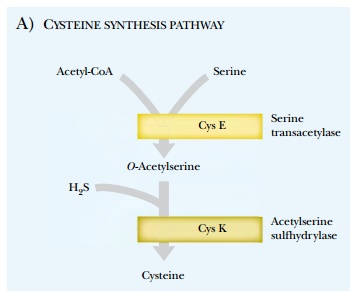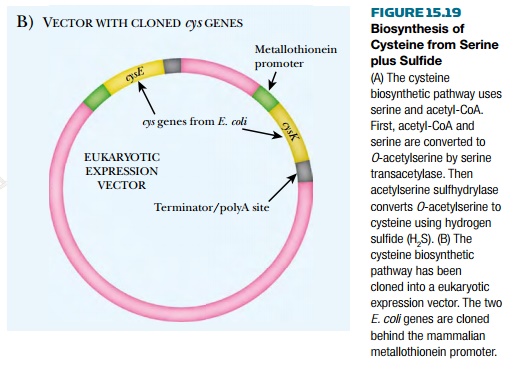Chapter: Biotechnology Applying the Genetic Revolution: Transgenic Animals
Improving Livestock by Pathway Engineering
IMPROVING
LIVESTOCK BY PATHWAY ENGINEERING
It is possible to combine
pathway engineering with cloning to produce improved livestock (as opposed to
merely using transgenic animals as the source of a single useful protein). For
example, the genes for the cysteine biosynthetic pathway are absent in mammals.
Consequently mammals, including sheep, cannot make the sulfur-containing amino
acid cysteine and must receive it in their diet. Sometimes cysteine is limiting
for wool growth. Adding extra cysteine to the diet works poorly because of its
uptake and degradation by microorganisms in the sheep’s intestine.
Many bacteria do synthesize cysteine. Two steps are needed, starting from the amino acid serine plus inorganic sulfide (Fig. 15.19). In enteric bacteria these two key enzymes, serine transacetylase and acetylserine sulfhydrylase, are encoded by the cysE and cysK genes, respectively. These two bacterial genes have been cloned from Salmonella and placed under control of the mouse metallothionein promoter. The construct has been successfully integrated into transgenic mice, which expressed both enzymes. Furthermore, when these mice were deprived of the two sulfur-containing amino acids, cysteine and methionine, they remained healthy and made their own cysteine. The animals did need inorganic sulfide in their diet.


Although transgenic sheep carrying bacterial cysE and cysK genes have been made, high-level expression of these genes and synthesis of cysteine in the desired location (the epithelium of the rumen) have not yet been achieved. Several other schemes to improve livestock, including synthesis of other essential amino acids such as lysine and threonine, are in the early experimental stages.
Related Topics